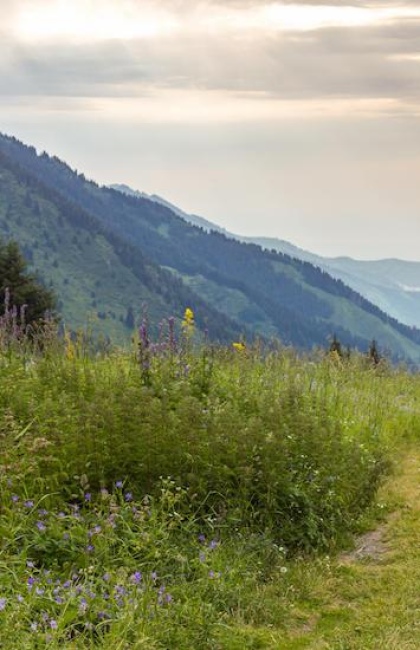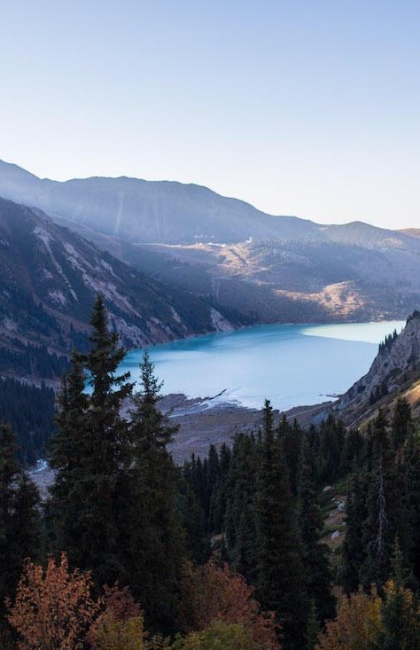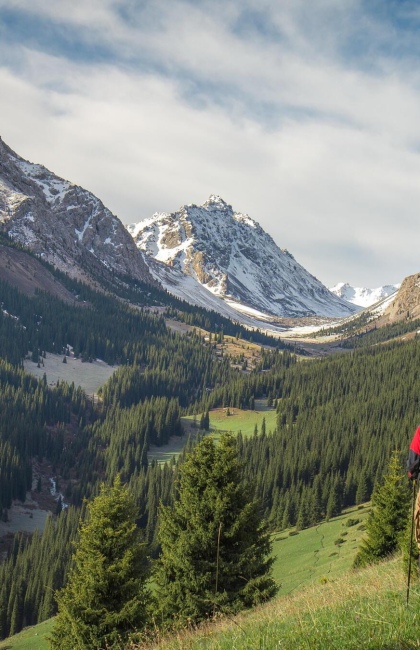Safety Rules for Mountain Hiking
Mountain hiking is an exhilarating activity that tests one's physical limits and offers stunning vistas. However, it also carries risks, so it is crucial to follow safety guidelines carefully. This article covers how to prepare for a mountain hike, what precautions to take, and what to watch out for to ensure a safe and enjoyable experience. Although some advice is tailored for hikes near Almaty, most recommendations will be beneficial for hikers in any mountainous region.
The greatest danger for a tourist in the mountains is ignorance of the potential risks. Being aware of the dangers and knowing how to manage them significantly enhances safety. Entering mountains without adequate preparation may lead to poor decisions in crisis situations. Vigilance is essential when you’re in the middle of nowhere. Even on the most straightforward path, which you may have traversed numerous times, unforeseen circumstances can still arise. The purpose of our article is not to instill fear, but to prepare you, at least theoretically, for potential difficulties.
When opting for a commercial hike, choose only licensed companies with a solid reputation. Avoid chasing low prices, as you are essentially entrusting your health and life to the company.
Another important rule is to never go to the mountains alone! If something happens to you on the trail, there will be no one to help. If you lose consciousness, you could suffer from frostbite or even die from hypothermia.
Another important piece of advice: never aim to reach the summit at all costs. If you feel unwell, start late and won't make it before dark, or see the weather deteriorating, turn back. We understand how difficult it is to turn back when the summit is in sight, but the risk is not worth it. Reinhold Messner, the first person to conquer all 14 eight-thousanders, failed these ascents 13 times, meaning he turned back almost half the time. You can always try again.

Preparing for the hike
Now let's move on to more specific tips and start with preparing for the hike.
- Select a route that matches your skill level and physical capabilities.
- Before the hike, share your route with your loved ones. If it's a long hike, provide detailed information about the route, including a day-by-day schedule and your expected locations.
- Register with the search and rescue unit of the Department of Emergency Situations of the Almaty region. You can do this via email at edds_dchs_almob@emer.kz, od_dchs_almob@emer.kz, or by phone at 8 (7282) 30-55-70. Include contact phone numbers, a route map, and your departure and arrival dates.
- If you’re using new equipment, test it beforehand. Take a training trip with your full gear outside the city. If you have new trekking boots, wear them in the city for a few days to break them in and avoid blisters during the hike.
- Pack everything you plan to take and test the weight of your backpack. You might find it necessary to adjust your load by adding or removing items after testing.
- Always check the weather forecast before leaving. If bad weather is expected, consider postponing the hike.
- Familiarize yourself with the route’s difficulty, elevation gain, and any potential dangers along the way.
Acclimatization
If you've just arrived in Almaty, avoid attempting to conquer a four-thousander immediately. Your body needs time to acclimate to the altitude to prevent altitude sickness.
Signs of altitude sickness include:
- Dizziness and headache
- Nausea and vomiting
- Tremors of the limbs
- Increased heart rate
- Elevated temperature
- Decreased concentration, etc.
Remember, everyone reacts to altitude differently. Some people feel fine at 3,500 meters, while others struggle at 2,000 meters. To acclimate, gain altitude slowly. During ascents, groups often gain altitude and then retreat down the trail a bit to help their bodies adjust to lower oxygen levels.
If you experience any symptoms of altitude sickness, descend immediately. Don't mask the headache with painkillers and push on – your health and safety are the top priority.
Essential equipment
Having the right gear can greatly increase your safety and comfort during a mountain hike. Here are some important items to bring:
- Navigation tools: map, compass, and GPS device
While GPS devices are useful, they shouldn't be relied upon exclusively. They can run out of power, malfunction, or provide incorrect location data. Moreover, GPS routes might become impassable due to rockfalls, floods, or other obstacles.
To ensure reliable navigation, carry a paper map. On guided hikes, the route map is often held by the guide. Make a copy of this map and ask the guide to highlight key landmarks. Store your map in a waterproof zip bag to protect it from the elements. Additionally, keep a fully charged cell phone and a power bank.
- Suitable clothing
Dress in layers to maintain warmth. Wear waterproof outerwear and sturdy trekking shoes. Pack light footwear for use at the campsite. Bring a hat, gloves, and multiple pairs of socks. Sunglasses are essential year-round: in summer, they protect your eyes from the sun; in winter, from snow glare and possible snowstorms. Always be prepared for sudden changes in mountain weather.
- Protective gear
Bring a personal first aid kit, an emergency whistle, a headlamp with extra batteries, and a multi-tool or knife. A highly useful item is a rescue blanket – a thin film coated with metallized reflective material, typically gold or silver. This blanket is waterproof, windproof, and retains body heat. Despite weighing almost nothing, it can be life-saving in an emergency.
- Backpack
Choose a backpack that is spacious enough for your needs, sits comfortably on your back, and is lightweight. It's advisable to use a waterproof cover for protection. Avoid overloading your backpack. For experienced hikers, the backpack's weight should not exceed one-third of their body weight. For beginners, it should be no more than one-quarter. For instance, if you are a beginner weighing 80 kilograms, your backpack should weigh no more than 20 kilograms.
- Documents
Many routes in the Almaty region pass through border areas, so always carry your identity document with you.
Weather
Many stories about tragedies in the mountains begin with the phrase, "The weather suddenly turned bad..." Hypothermia is the leading cause of death during hikes. Even if it's hot in Almaty, temperatures in the mountains can drop below freezing.
One example illustrating the consequences of disregarding weather forecasts is the tragic incident known as the "30th Route Tragedy." It occured in early September 1975 in the USSR. A group of 51 people embarked on a seemingly easy hike in the northwestern Caucasus mountains. Despite reports of worsening weather, guides ignored the warnings. The group indulged in evening drinking, overslept in the morning, and delayed their departure. By the second day, light rain escalated into a blizzard. Due to their delayed departure, the group didn’t make it to the shelter before dark. Panic set in, the group split into subgroups, the strong abandoned the weak, and the guides lost control. Ultimately, 21 people succumbed to hypothermia.
This tragedy underscores several crucial lessons:
- Respect weather forecasts.
- Carry warm clothing, even if it's hot at the base of the mountains.
- The group should stay together. The pace should be set by the weakest participant.
- Keep groups small to ensure effective leadership and cohesion.
- Adhere to a disciplined schedule. Start your hike on time to ensure you can complete the day's journey, set up tents, and cook dinner before dark.
- Alcohol is strictly prohibited on hikes.
Here are a couple more tips for dealing with weather in the mountains:
- If you hear a rustling or ringing noise, or feel a tingling sensation, you are likely in a thundercloud. It is one of the most dangerous situations in the mountains. In this case, remove all iron objects from your person, descend from high ground, and seek shelter immediately. Avoid standing under lone trees or near bodies of water during a thunderstorm.
- If fog rolls in and visibility decreases, it's safer to stop moving and establish camp until conditions improve. Fog can obscure cliffs or crevices, posing serious risks.
- You can check the weather forecast using the Windy.com mobile app, which allows you to pinpoint any location in the mountains and receive a detailed forecast tailored to that specific area. The app's map includes major peaks and hiking routes in the Almaty region.
Safety precautions on the route
- Stick to marked trails and avoid taking shortcuts or straying from designated routes.
- Be cautious with estimated hiking times indicated on signs near Almaty. For instance, if you encounter a sign stating "Kumbel Peak – 2.5 hours," understand that this estimate is based on the pace of a trained hiker. If you are less experienced, it might take you twice as long to complete the climb. Misjudging your timing could lead to being stranded in the mountains overnight.
- Protect against tick bites. In the Almaty mountains ticks may carry diseases like encephalitis and Lyme disease. High tick activity occurs in April-May and August-September. Wear long sleeves and pants, tuck pants into socks, wear a hat, use insect repellents, and regularly check your body and clothing for ticks. Consider appropriate vaccinations for longer hikes.
- Refrain from consuming unfamiliar berries and mushrooms found along the trail.
- Never attempt to cross rivers alone. Furthermore, avoid crossing turbulent rivers barefoot to prevent injuries from sharp stones. It's advisable to use appropriate footwear, such as Crocs or other closed rubber shoes.
- Avoid sunbathing, as sunburn can make wearing a backpack uncomfortable. Use sunscreen on exposed skin and apply lip balm for protection.
- When walking on a steep path, if a stone dislodges under your foot and rolls downhill, shout "Stone!" to alert others walking behind you.
- When crossing a glacier, avoid snow-covered areas as crevasses may be hidden beneath the snow. Additionally, steer clear of seracs, which are ice columns that can collapse suddenly.

Campsite safety
- Avoid setting up camp in lowlands or near rivers, as these areas can flood rapidly. Similarly, pitching tents at the base of cliffs poses risks of rockfalls. If you must camp under trees, ensure they have solid roots and check for any large, dry branches that could potentially fall on your tent.
- Build fires away from the tent, dry grass, or other flammable materials. Avoid using flammable liquids when lighting a fire.
- If using a gas burner or stove inside a tent, ensure there is adequate ventilation to prevent carbon monoxide buildup. Carbon monoxide poisoning can cause headaches or, in extreme cases, death. Never sleep in a tent with a functioning gas burner. Also, exercise caution with hexamine fuel tablets as they release hydrocyanic acid when burned. It's safer to avoid cooking inside the tent altogether due to the risk of rapid combustion.
- If you leave the camp, warn others.
Avalanches
In the Ile Alatau Mountains, 85% of avalanches occur in February and March. However, avalanches can occur year-round in high-altitude areas. Follow warnings from Kazselezashchita regarding avalanche risks.
Most avalanches occur shortly after heavy snowfalls, so avoid hiking in the mountains for 2-3 days following such snowfall events. Avalanches also frequently occur after periods of strong and prolonged thawing, typically during March and April.
Avalanches can also be triggered by strong winds. Danger often manifests with the formation of large cornices on the lee sides of mountain ridges.
How to increase your chances of survival if caught in an avalanche:
- When entering avalanche-prone areas, carry an avalanche transceiver (avalanche beacon). This device emits signals that aid rescuers in locating you quickly under the snow.
- Ensure your group is equipped with an avalanche probe and shovel. The probe is a collapsible pole used to search for victims buried in the snow. An avalanche shovel, specifically designed to be lightweight and foldable, is essential and adds minimal weight to your hiking backpack.
- An avalanche airbag is the most effective means of increasing survival chances during an avalanche. It contains an inflatable pillow that helps keep a person on the snow surface. To activate the airbag, it's crucial to quickly pull the handle.
- Carry an Avalung, a device that enables breathing under snow for 30-40 minutes.
- To escape a rushing avalanche, move to the side rather than downhill. Seek refuge behind a ledge, large boulder, or ascend to higher ground.
- If there is no place to take cover, quickly discard unnecessary items such as skis, poles, and ice axes.
- If caught in an avalanche, bring your knees up to your stomach and shield your face with your hands, creating an air pocket around your face to facilitate breathing.
- Once the avalanche settles, determine the direction of up and down. Test this by spitting saliva and observing its flow, noting where gravity directs it. Once you establish where the ground is, start digging in the opposite direction.
- If you feel drowsy, avoid sleeping under any circumstances.
Mudflows
A mudflow is a swift, turbulent stream in mountainous regions that carries rocks, ice, and tree debris. Here are tips to recognize an approaching mudflow and stay safe:
- Avoid visiting the mountains right after heavy rains.
- Refrain from camping near riverbanks. If the river suddenly becomes cloudy or its current accelerates abruptly, immediately move to higher ground.
- Cracks appearing on asphalt or the ground may signal an impending mudflow.
- When fleeing a mudflow, run to the side rather than directly away from it. Act swiftly.
- Designate a lookout who can alert others to the danger.
- Mudflows may announce themselves with noise and a rising cloud of mud resembling fog.
- Domestic animals, especially sheep, often sense approaching mudflows first.
For more information on mudflows in Almaty and city protection measures, refer to the dedicated article.
Some guidelines on mountain etiquette or why you should greet people in the mountains
- Always greet others when you encounter them in the mountains. This isn't just a gesture of goodwill; it can be crucial if you get lost. The person you greeted can recall where they last saw you and in which direction you headed, aiding rescuers in locating you.
- When descending a narrow path and encountering a group ascending, give way to those going uphill. Climbing demands more effort, and interruptions can disrupt their rhythm, making it challenging to maintain momentum and breath.
- Respect cairns (piles of stones created by hikers). They serve as landmarks in areas where trails are hard to see. Avoid destroying them and refrain from building new cairns, as this can confuse other hikers.
- Do not wash yourself or clean dishes with detergent in bodies of water. Instead, collect water and move away to do these activities. The same applies to toileting; move far from lakes and rivers.
- Adhere to the "Leave No Trace" principle, minimizing environmental impact. Carry out all trash and follow the hiker's rule: leave campsites cleaner than you found them.
In case of emergencies in the mountains near Almaty, use the following contact numbers:
Rescue service: 109, 112 (works even outside network coverage)
Republican Rescue Squad: +7 (727) 372-15-60

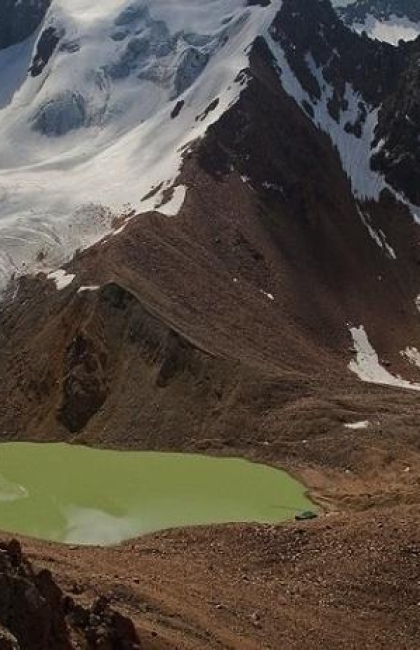
_420x650_4ab.jpg)
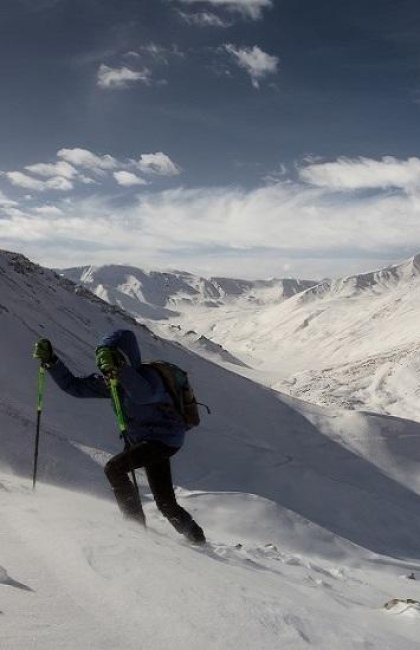
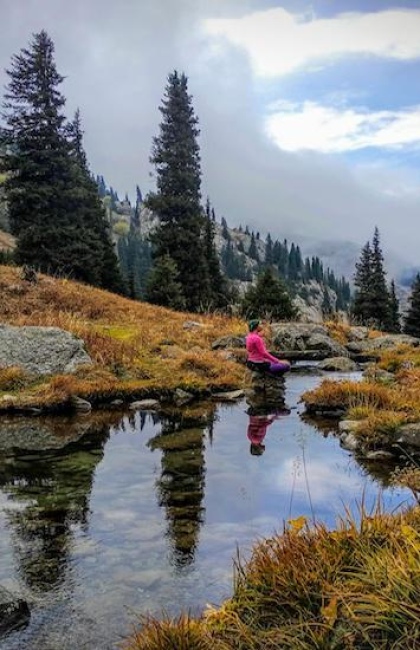
_420x650_4ab.jpg)
